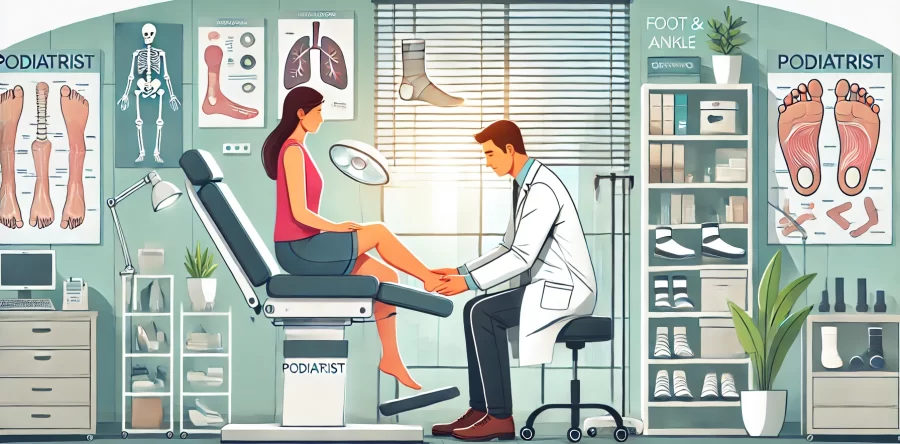Can I see a podiatrist without a referral?


Maintaining optimal foot health is crucial for everyone, but for residents of Westchester County, where active lifestyles are common, it becomes even more significant. Whether you're an avid hiker exploring the beautiful trails or someone who enjoys strolls along the Hudson River, taking good care of your feet is essential. Here are the top 10 foot care tips from your trusted Westchester NY podiatrist.
Wearing the correct shoes for each activity is the first step in preventing foot injuries and discomfort. Make sure your shoes provide proper support and fit well. Your Westchester NY podiatrist can help recommend the best types of shoes based on your foot type and activities.
Fungal infections thrive in moist environments. To avoid issues like athlete's foot, it’s crucial to keep your feet clean and dry. Always dry your feet thoroughly after washing, especially between the toes.
Dry skin can lead to cracks and other foot problems. Use a good moisturizer daily, but avoid applying it between the toes to prevent fungal infections. Consult your Westchester NY podiatrist for recommendations on the best products.
Improper nail trimming can lead to ingrown toenails, a common and painful condition. Trim your nails straight across and not too short. Your Westchester NY podiatrist can provide guidance on proper nail care.
Check your feet regularly for cuts, sores, swelling, and infected toenails. If you have diabetes, this is even more crucial. Schedule regular check-ups with your Westchester NY podiatrist to catch potential problems early.
Just like with shoes, wearing the right socks is important. Opt for socks made of fibers that wick moisture away from the skin. Your Westchester NY podiatrist can suggest the best types of socks for your needs.
Always wear shoes in public areas like gyms, pools, and locker rooms to avoid catching fungal infections.
Maintaining good circulation is important for foot health. Regular exercise such as walking or swimming can keep your blood flowing properly. Consult with your Westchester NY podiatrist about the best exercise regime that won’t put undue stress on your feet.
Overuse of foot muscles can lead to pain and discomfort. Learn to recognize the signs of strain. Rest your feet when necessary, and consult your Westchester NY podiatrist if pain persists.
For any persistent foot problems or discomfort, consult a professional. Your Westchester NY podiatrist is trained to diagnose and treat all types of foot issues, from the simple to the complex.
Maintaining foot health is a crucial part of living a happy and active life in Westchester County. By following these tips and regularly consulting with your Westchester NY podiatrist, you can keep your feet in top shape, ready to carry you on your next adventure. Remember, healthy feet are a foundational step towards a healthier life.
Ingrown toenails develop when the edge of the toenail – most commonly the nail on the big toe – is pressed into the skin along the edge of the nail bed, causing the nail to grow into the skin instead of alongside it. Ingrown toenails are especially common among people who wear shoes that are tight or restrictive in the toe area as well as those with very wide feet and those whose toenails tend to grow in a more curved shape. Cutting toenails in a curved shape instead of straight across increases the likelihood of developing an ingrown toenail. Without prompt professional care, the ingrown nail can continue to grow into the skin and eventually cause a painful and potentially dangerous infection which can spread to the rest of the toe and even into the foot. Men and women with diabetes and other issues affecting circulation are at an increased risk for developing infections as a result of ingrown toenails since their healing responses usually are diminished. In addition, numbness associated with diabetic neuropathy can make it more difficult to recognize the pain associated with an ingrown toenail, allowing an infection to become much worse over time.
Ingrown toenails typically cause pain, redness and swelling along the edge of the nail. Symptoms are especially noticeable when wearing shoes. Without treatment, the nail will continue to grow into the skin and an infection can develop, resulting in pus, increased pain, and sometimes serious complications.
In their early stages of growth, ingrown toenails may be treated with professional trimming followed by placement of a tiny piece of gauze to keep the nail away from the nail bed as it grows. In more advanced cases, a part of the nail or the entire nail may need to be removed. Nail removal can be completed in the office under local anesthesia. Once the nail is removed, a special medicine can be applied to the area to prevent the nail from growing back into the tissue. If the area has become infected, antibiotics will also be prescribed to treat the infection and to prevent it from spreading.